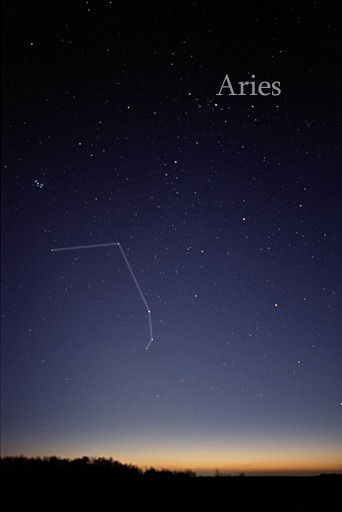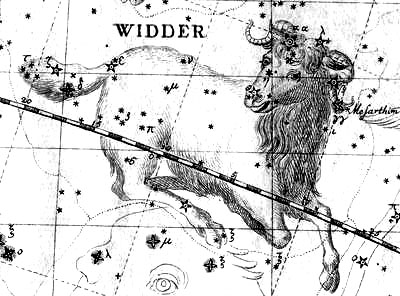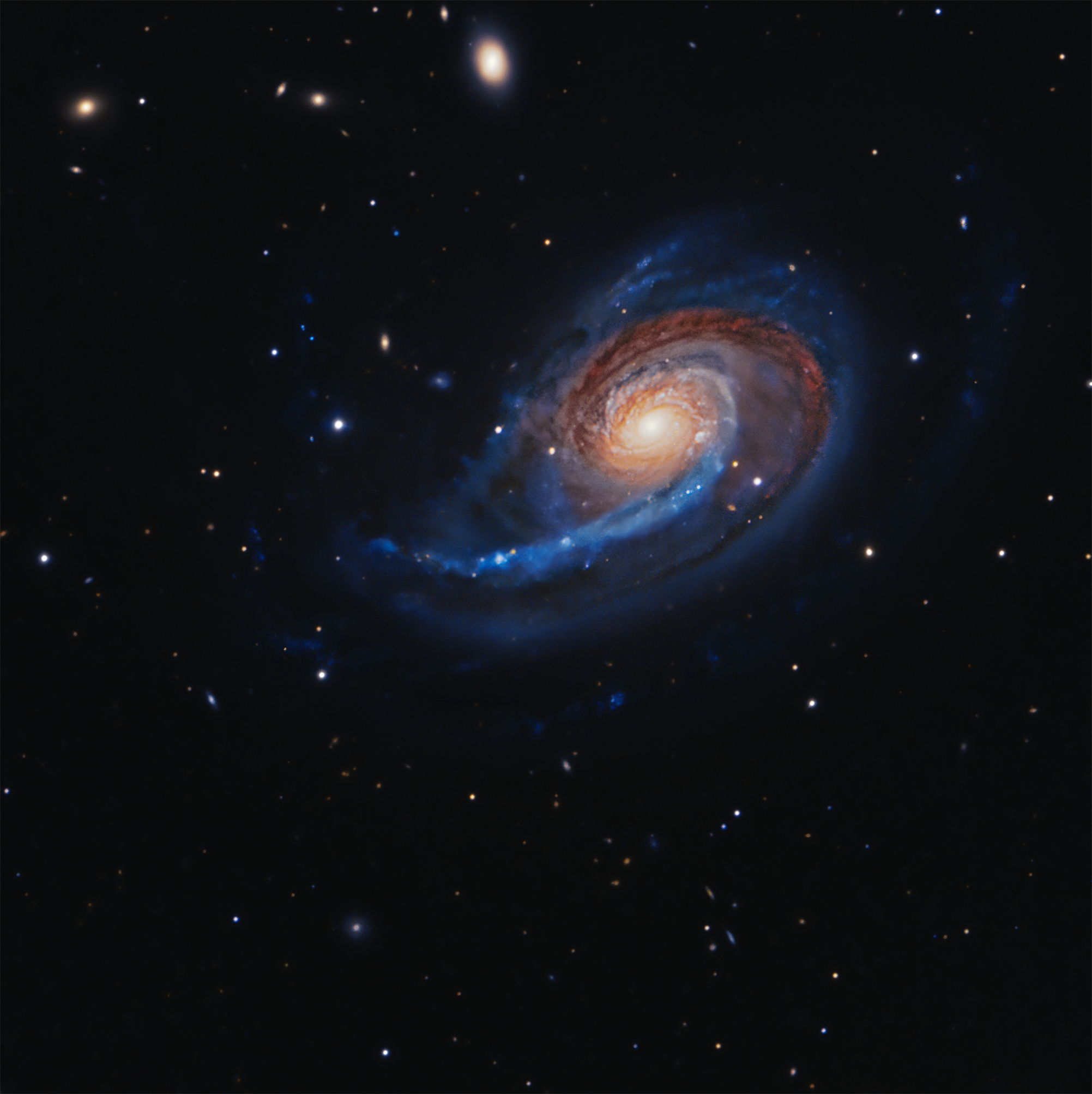Aries

Till Credner - Own work, AlltheSky, CC BY-SA 3.0, wikimedia

Aries_constellation_map.png: Torsten Bronger derivative work:
Kxx (talk) - Aries_constellation_map.png,
CC BY-SA 3.0, wikimedia
The constellation Aries is the symbol of Spring. This is because in the past it contained the so called Gamma Point, that is, the point where the ecliptic plane intersects the celestial equatorial plane, showing the position of the Sun during the Spring equinox. Today, however, due to the precession of the equinoxes, the point of intersection is now found in the constellation of Pisces. The best time to see Aries is when it is opposite the Sun, between late autumn and the beginning of winter when it is visible throughout the night, half-way between Taurus and Andromeda.

Public domain, wikimedia
The stars making up Aries are associated with the story of the Argonauts and the Golden Fleece where a wingèd ram was sent by Zeus himself to save Phrixus, son of Athamas. The magical golden fleece of the ram, was stolen by Jason and the Argonauts with the help of Medea from Colchis, modern-day Georgia.
The Beta star Sheratan is actually a double star, even though we cannot directly see its companion because the stars are too close together -dspectroscopic binary star. It is twice as big as the Sun and is currently 60 light-years from Earth. Its distance, however, tends to lessen as it progressively gets closer to the solar system, at the speed of less than 2 km per second.
The Gamma star Mesarthim is a famous double star visible with a small telescope. The pair of stars are 164 light-years from us and they orbit around a common center of mass at a period of 5,000 years. The stars have a mass of 2.8 and 2.5 times that of the Sun.

Göran Nilsson & The Liverpool Telescope
Own work, CC BY-SA 4.0, , wikimedia
NGC 772 The only object in the deep sky worth mentioning is the NGC 772 galaxy, which is as big as our Milky Way, 100 million light-years from us. It has a slightly distorted shape due to gravitational disturbance from an elliptic galaxy nearby.
Southern Hemisphere: Aries is visible at the same time of the year as in the Northern hemisphere, even though it is lower on the horizon. At the southern middle latitudes, in December right after sunset, we find it towards the north between the zenith and the horizon.